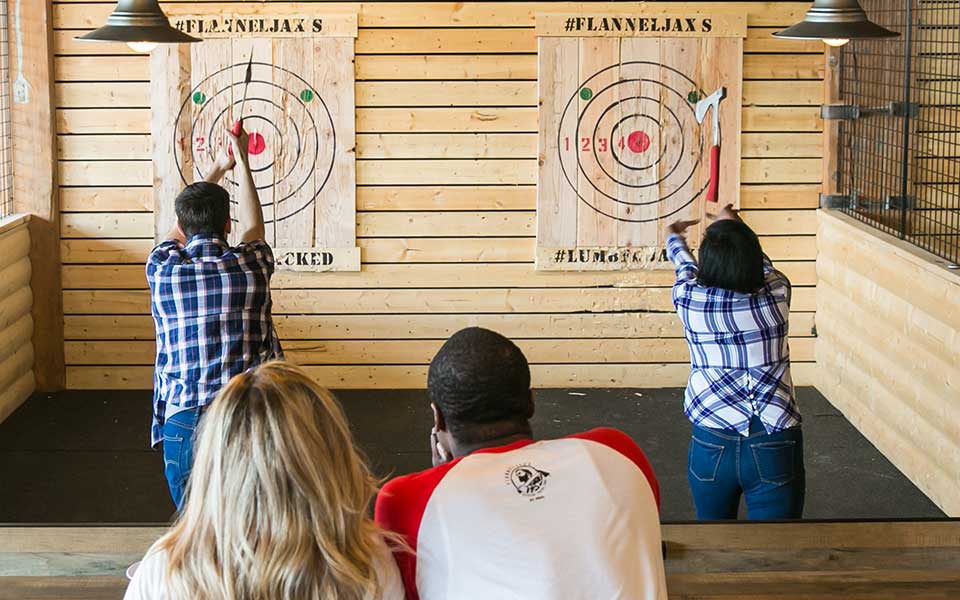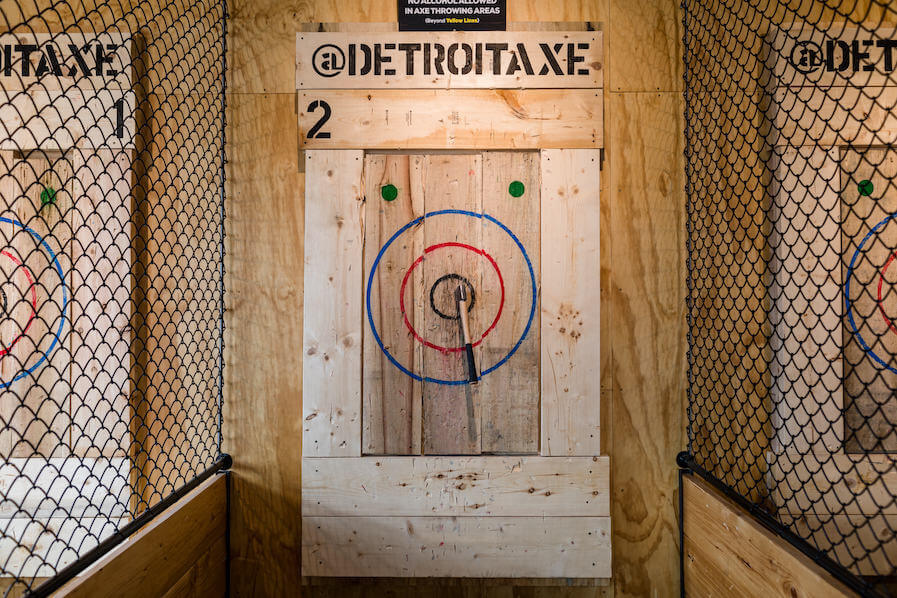Dive into the Axe Throwing Denver Scene: What You Need to Know
Dive into the Axe Throwing Denver Scene: What You Need to Know
Blog Article
The Fun of Axe Throwing: How This Sporting Activity Incorporates Skill and Adrenaline for a Great Time
Axe throwing has actually arised as an astounding sport that masterfully intertwines the requirement for exact skill with the rush of adrenaline, offering individuals a engaging and one-of-a-kind experience. The act of tossing an axe in the direction of a target requires focus and method, at the same time fostering an atmosphere of friendship and pleasant competition.
The Beginnings of Axe Throwing
Axe throwing, an entertainment activity that has actually gotten substantial appeal in current years, traces its roots back to ancient times. This primal sport days back to early human history, when axes were mostly made use of as weapons and tools. The earliest documents of axe use in competitive contexts are discovered amongst the Celts and Vikings, who threw axes for sporting activity along with in combat training. The practice was not merely an activity yet a crucial ability for survival and war.
Medieval European warriors, particularly throughout the Middle Ages, practiced axe tossing as component of their martial training. The Francisca, a sort of throwing axe made use of by the Franks, became famous for its lethal accuracy. This typical weapon was made to be thrown at enemy shields and shield, showcasing its twin utility in both sport and fight.
In even more current background, axe tossing saw a resurgence in the logging camps of North America in the 20th and 19th centuries. Lumberjacks would take part in friendly competition, checking their precision and stamina by focusing on wood targets. This evolution from a survival skill to a recreational activity has actually led the means for its contemporary renewal, with specialized venues and organizations currently celebrating the sporting activity around the world.
Equipment You Required
Recognizing the abundant background of axe tossing boosts the gratitude of the sporting activity's contemporary model. For entertainment and affordable axe tossing, the most frequently used type is the hatchet, generally evaluating in between 1.25 to 2 pounds with a deal with size of about 16 inches.
Similarly important is the target. Regulation targets are constructed from timber, with softwood varieties like want or cottonwood being favored for their capability to hold the axe and take in. The target is normally separated into five concentric circles, each with a particular factor worth, to facilitate scoring.
Safety and security equipment, though commonly forgotten, is important. Protective handwear covers can improve hold and protect against blisters, while closed-toed shoes are a must to protect feet from gone down axes (axe throwing denver colorado). A well-lit, roomy tossing location, full with security obstacles, guarantees a controlled atmosphere where individuals can concentrate on sharpening their skills.
Standard Techniques Discussed
Grasping the basic techniques of axe throwing is crucial for both safety and security and proficiency. The very first method to recognize is the grasp. Hold the axe with a firm, yet loosened up hold, similar to holding a golf club. The dominant hand ought to be placed straight listed below the axe head, while the non-dominant hand supports the end of the take care of.
Your leading foot should be a little forward, lining up with your target. This positioning help in maintaining security and directing power accurately in the direction of the target.

Security First
Making certain safety and security in axe throwing is paramount to developing an injury-free and pleasurable experience. Precaution begin with the place format. A properly designed axe throwing center attributes clear separations between tossing lanes, tough backgrounds to capture roaming axes, and non-slip floor covering to stop accidents. In addition, adequate lighting is critical to help individuals preserve visual accuracy and spatial understanding.
Advantages of Axe Throwing
Axe throwing offers a myriad of advantages that expand past easy recreation. Physically, it gives a full-body exercise, involving muscle mass in the arms, shoulders, back, and core. The repeated this post motion of tossing the axe also boosts hand-eye control and fine electric motor skills. For those wanting to improve their overall physical fitness, axe throwing can function as a appealing and vibrant type of exercise.
Mentally, axe tossing calls for precision, approach, and emphasis, making it an exceptional means to hone cognitive abilities. The focus needed to strike the target can serve as a type of mindfulness, permitting individuals to remove their minds and reduce tension. This psychological involvement can be especially valuable in helping individuals create far better problem-solving skills and mental resilience.
Socially, axe throwing is usually enjoyed in team settings, promoting team-building and camaraderie. Whether as part of a company occasion or an informal trip with close friends, the sport encourages interaction and cooperation. Furthermore, the public experience of learning and enhancing with each other can reinforce partnerships and create enduring memories.
Conclusion

The earliest records of axe usage in competitive contexts are found among the Celts and Vikings, that threw axes for sporting activity as well as in fight training. Launch the axe when your hands are around at eye degree, allowing the axe's natural rotation to direct it towards the target.
A properly designed axe tossing facility features clear demarcations between throwing lanes, strong backdrops to catch stray axes, visit this site and non-slip floor click over here covering to avoid mishaps. Individuals have to be advised on the proper means to throw the axe and handle, emphasizing controlled, deliberate movements over forceful throws.
In summary, axe throwing stands out as a sport that masterfully integrates adrenaline, accuracy, and skill.
Report this page